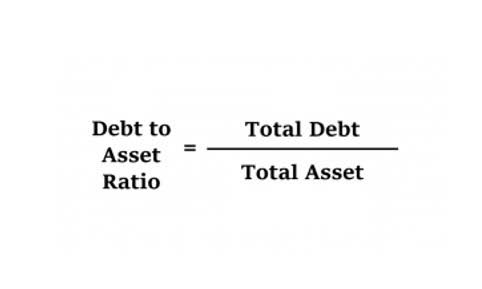
Cash Flow from Operations (CFO), also known as operating cash flow, is a key financial metric that measures the amount of cash a company generates from its core business activities. This figure is crucial for investors and analysts as it reflects the company’s ability to generate sufficient cash to maintain and grow its operations without needing external financing. Investing activities cash flows are those that relate to non-current assets, including investments. Examples of cash flows from investing activities include the cash outflow on buying PPE, the sale proceeds on the disposal of non-current assets and any cash returns received arising from investments.
- For all of those budget estimates, CBO uses Treasury interest rates for discounting; it sometimes also uses rates that incorporate premiums for market risk (see Figure 2).
- You’ll find these financial numbers in your company’s balance sheet or income statement.
- Cash equivalents, which have an original maturity of three months or less, include money market funds, treasury bills, and commercial paper.
- Under the direct method, the information contained in the company’s accounting records is used to calculate the net CFO.
- Once you have collected all the relevant financial information through financial statement analysis and cash flow statement preparation, you can proceed to calculate operating cash flow.
- This cash flow can contribute to discretionary free cash flow, which may be allocated to shareholder returns, financing deals, or capital expenditures.
What are examples of cash flow from operating activities?

Solution It is necessary to reconcile the opening tax liability to the closing tax liability to reveal the cash flow – the tax paid – as the balancing figure. A vertical presentation of the numbers lends itself to noting the source of the numbers. At the start of the accounting period the company has a tax liability of $50 and at the reporting date a tax liability of $90. During the year the tax charged in the statement of profit or loss was $100.
Part 2: Your Current Nest Egg
- Government spending on human and physical capital affects the federal budget in part through its effects on the economy.
- Decreasing in working capital indicates cash inflow where increase in working capital is a sign of cash outflow.
- Cash flow is the total amount of cash that is flowing in and out of the company.
- Now that you have calculated the operating cash flow from assets, let’s move on to determining investing cash flow without step-by-step instructions.
Financial management forecasts expected cash flow to meet liquidity needs and obtain financing when required. Free cash flow is a metric that investors use to help analyze the financial health of a company. It looks at how much cash is left over after operating expenses and capital expenditures are accounted for. In general, the higher the free cash flow is, the healthier a company is, and in a better position to pay dividends, pay down debt, and contribute to growth.

Unlevered free cash flow formula
Cash flow from assets (CFFA) represents the total cash generated by a business’s assets within a specific period. Cash flow from assets focuses only on cash generated by operations, excluding external financing activities, such as selling stocks. This indicates that a company’s operating activities are not generating enough cash to cover its expenses and investments. To begin with, let’s take a closer look at the cash flow from assets statement. This statement provides a breakdown of how your company is generating cash from its operating activities, investing activities, and financing activities. By examining each component of the statement, you can identify any areas where improvements can be made or potential risks may arise.
How CBO Uses Discount Rates to Estimate the Present Value of Future Costs or Savings

In industries where dividends are seen as essential, consistent FCF is crucial to how to calculate cash flow from assets maintaining shareholder confidence. One can conduct a basic cash flow analysis by examining the cash flow statement, determining whether there’s net negative or positive cash flow, pinpointing how the outflows compare to inflows, and drawing conclusions from that. Any cash flows that include the payment of dividends or the repurchase or sale of stocks and bonds would be considered cash flow from financing activities. Cash received from a loan or cash used to pay down long-term debt would also be recorded here. Increasing CFFA is essential to improve liquidity, fund expansion initiatives, and fortify their financial resilience, and various strategies can enhance CFFA and contribute to long-term sustainability. By streamlining processes, businesses can minimize waste and inefficiencies, ultimately reducing operational costs and enhancing cash flow.
Indirect Cash Flow Method

It might seem https://x.com/BooksTimeInc odd to add back depreciation/amortization since it accounts for capital spending. The reasoning behind the adjustment is that free cash flow is meant to measure money being spent right now, not transactions that happened in the past. This makes FCF a useful instrument for identifying growing companies with high upfront costs, which may eat into earnings now but have the potential to pay off later.
How to Calculate Cash Flow Using a Cash Flow Statement
It provides valuable insights for making informed financial decisions, empowering you with freedom to choose wisely. For instance, investments or your operating costs may change over time. In the case of Shania and her magazine, she might decide to move from print to digital, drastically reducing operational costs. However, this shift might also reduce sponsorship, changing her cash flow in other areas.With that in mind, remember to look at the context behind the numbers, not just the numbers themselves. This can give you a more realistic view of your net cash flow and the health of your business. Cash flow statements are important as they provide critical information about the cash inflows and outflows of the company.
Solution (a) direct methodThe direct method is relatively straightforward in that all the data are cash flows so it https://www.bookstime.com/ is a case of listing the receipts as positive and the payments as negative. Under the indirect method, the figures required for the calculation are obtained from information in the company’s profit and loss account and balance sheet. That means that Acme generates a large percentage of revenue from its operations. The statement also shows that Acme is investing in property and paying down debt, which could indicate the company is positioning itself for growth and improving its financial health. You can calculate a comprehensive free cash flow ratio by dividing the free cash flow by net operating cash flow to get a percentage ratio. The higher the percentage, the more efficiently the company generates free cash relative to its operations, which is typically a positive indication of financial strength.





